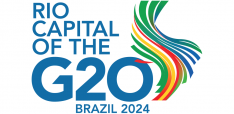Assessing the trajectory of West-Russia relations in Eastern Europe: Gauging three potential scenarios

The Ukraine crisis and the subsequent cooling of West-Russia relations has elicited a number of popular arguments as to the trajectory of the relationship, many of which are alarming and pessimistic. After acknowledging the current impasse that has emerged between the coalition of Western actors, Ukraine and Russia since the signing of the second Minsk agreement in early 2015, this article speculates three medium-term scenarios for the West-Russia relationship in the context of Eastern Europe. An optimal scenario whereby the relationship is reset along complementary trade and energy interests, a suboptimal scenario which would see the development of a New Cold War, and a pragmatic middle option that reduces the shared neighbourhood, especially Ukraine, to a Finland-style buffer state are offered. Of the three presented scenarios, it is argued that because Russia is prepared to pay a higher cost than the West, right now, it will likely end up with a more favourable outcome (the pragmatic scenario) than the rest.
Policy Recommendations
- The pragmatic scenario is desirable when the difficulty of achieving the optimal scenario and the lose-lose nature of the suboptimal scenario are factored in.
- For the West: Understanding the high price Russia is willing to pay to assert its hegemony in its near abroad is imperative to developing a coherent and viable strategy.
- For Russia: Realising the long-term costs of its aggressive actions in Ukraine and more broadly in its near abroad is urgently required.
- A commitment to greater European security integration by the West – whether through NATO, the EU or a new institution altogether – could reduce Russia’s bargaining power significantly in the long term.
Image Credit: thierry ehrmann via Flickr (CC BY 2.0)


